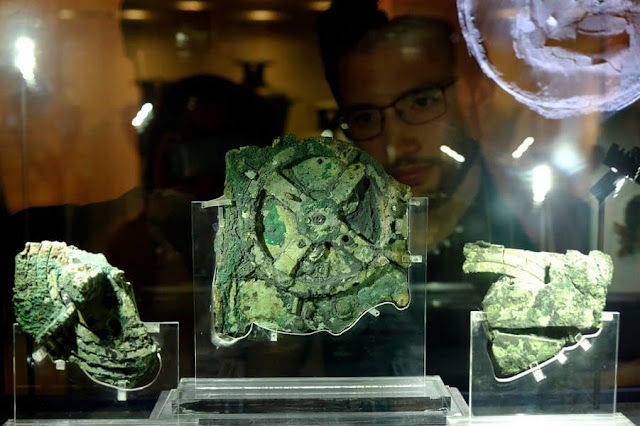Damascus Steel
Damascus steel is one of the most mysterious materials known. Centuries
ago, it was called wood steel and was renowned as the finest steel worldwide. Initially
produced in India, it was later transported to Damascus, Syria, where it was
crafted into swords. These swords were famous for their beautiful patterns and
superior qualities, being hard, flexible, and extremely sharp. What makes
Damascus Steel unique? The secret recipe for creating it has been lost for many
years, and no one has been able to replicate it accurately. Although there are
modern versions of Damascus blades, they are not the same as the originals. Metallurgists
and smiths today are still trying to recreate steel and forge the perfect
blade.
Iron Pillar of Delhi
The Iron Pillar of Delhi, standing 23 feet tall in the Qutb complex, is
famous for its resistance to rust. This ancient pillar, over 1,600 years old,
was erected by King Chandra, believed to be Chandra II, to celebrate a battle
victory and honor the Hindu God Vishnu. Despite being exposed to harsh weather
conditions, the pillar has not rusted, showcasing the metallurgical skills of
ancient Indian smiths.
Phaistos Disc in Crete
Discovered in 1908 in Crete, the Phaistos Disc is a 4,000-year-old
artefact from the Minoan Bronze Age. This small disc, covered with unknown
symbols, has puzzled historians and archaeologists since its discovery. While
some symbols are similar to ancient Minoan languages, the disc remains
undeciphered. Some experts believe it might be a religious text, while others
doubt its authenticity. The true purpose and meaning of the Phaistos Disc
remain a mystery.
Greek Fire
Greek Fire was a scary incendiary weapon used by the Byzantine Empire in
the 7th century AD. Described as liquid fire that water could not extinguish,
it played a crucial role in many Byzantine military victories. Invented by a
Greek architect named KalliniKos, the exact composition of Greek fire is still
unknown. Its recipe was a closely guarded secret, and its true ingredients
remain a mystery.
Zhang Heng's Seismograph
Zhang Heng, an ancient Chinese inventor, created the first known
seismograph over 2,000 years ago. This device could detect the direction of
earthquakes from over 100 miles away. The seismograph used a complex mechanism
involving bronze balls and dragon heads to indicate the direction of seismic
waves. The original device is lost, and modern attempts to replicate it have
not been successful.
Roman Dodecahedron
Roman Dodecahedrons, hollow bronze objects with 12 flat faces and knobs,
have been found in various locations across the Roman Empire. Their purpose is
still a mystery. Theories range from candlestick holders to fortune-telling
devices, but there is no definitive evidence. These objects, dating back to the
second or third century, continue to intrigue researchers.
Costa Rica Stone Spheres
In the Diquis delta of Costa Rica, workers discovered large, perfectly
spherical stone balls. These man-made spheres, some weighing up to 16 tons,
remain a mystery regarding their purpose. Dating back to between 200 BC and 800
AD, theories suggest they might have been used for navigation or decoration. Their
precise craftsmanship continues to amaze researchers.
Shroud of Turin
The Shroud of Turin is a linen cloth believed by some to be the burial shroud of Jesus. It bears the image of a man with crucifixion injuries. The shroud's authenticity is debated, with some tests stating it to the Middle Ages and others to the time of Jesus. The method by which the image was formed is still unknown. Despite extensive research, the Shroud of Turin remains a mysterious and fascinating relic.







No comments: